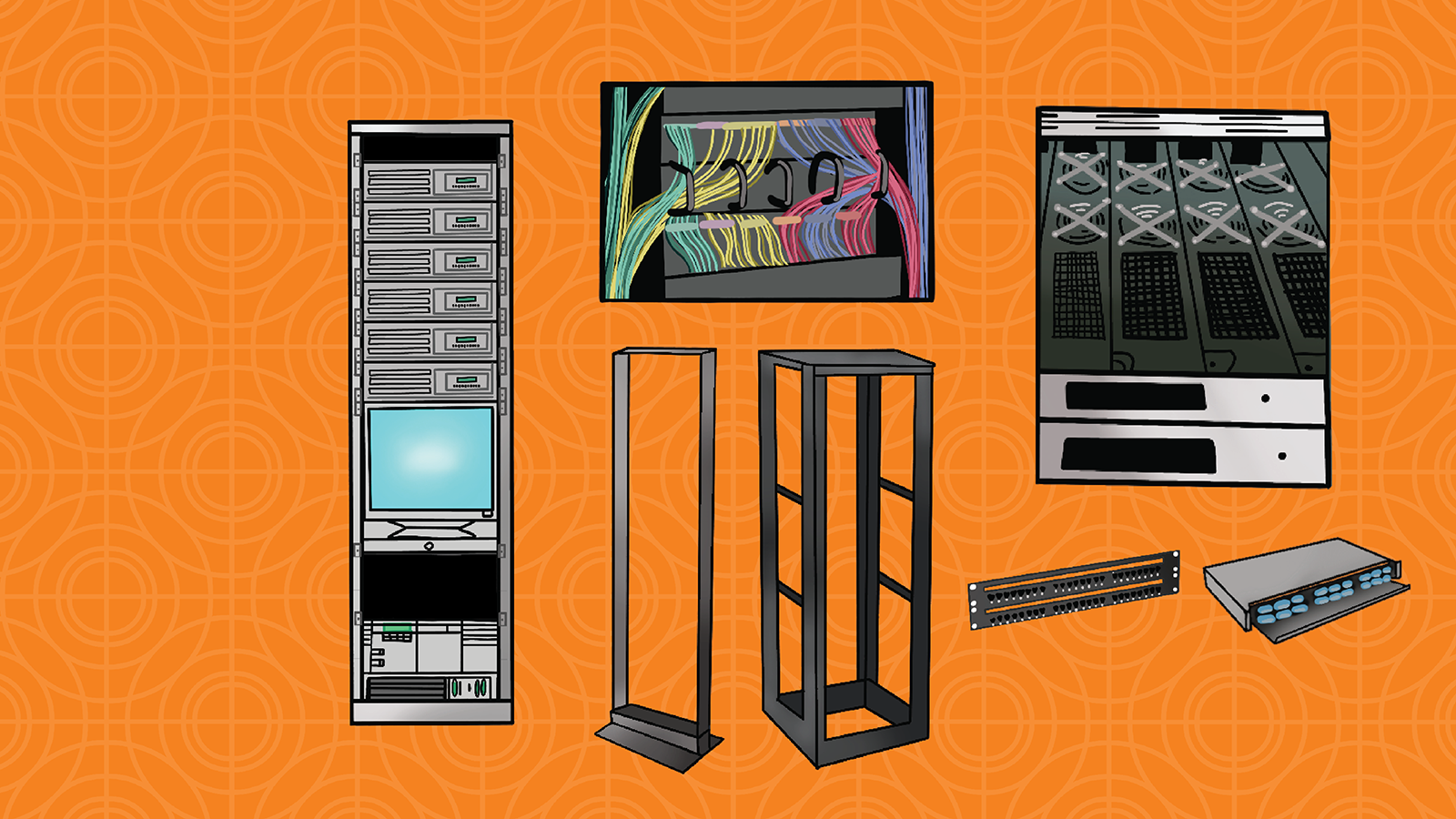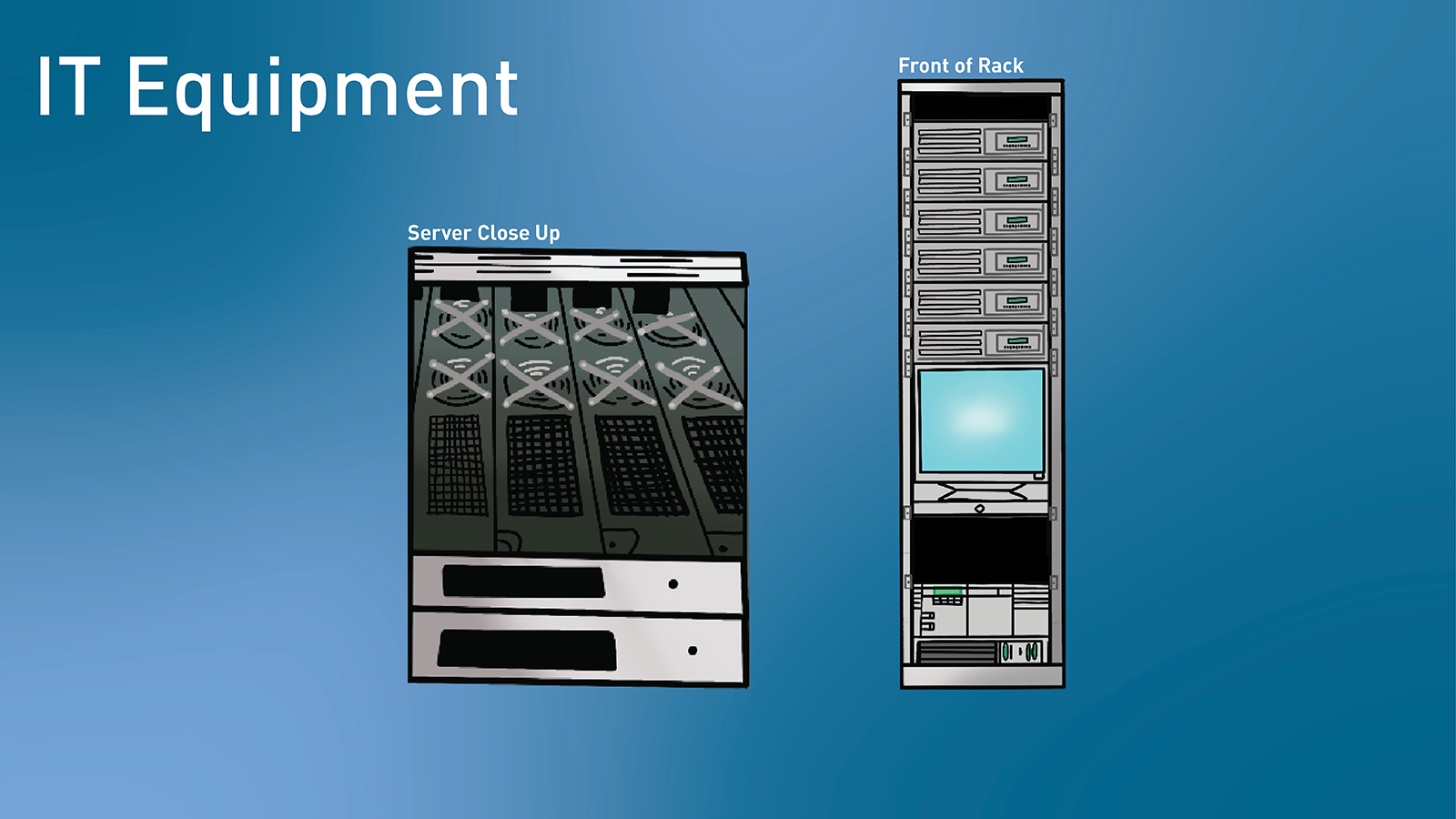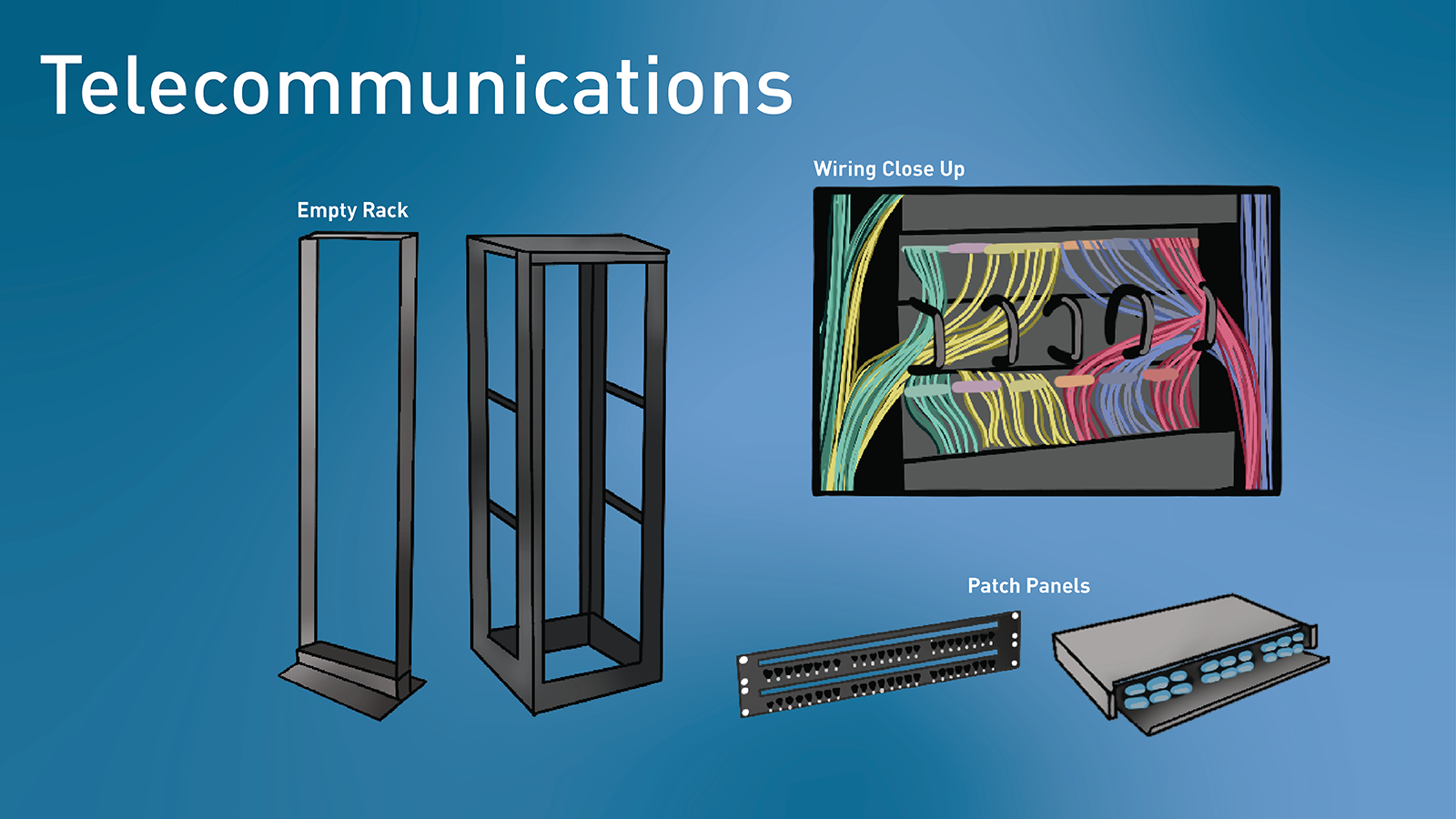Jay L. Epstein
Higher Education + Esports | Market Leader
Principal

Telecommunications, Telecom, Information Technology, IT and Technology. These are all terms that are often misused in the A/E/C community. The intent of this blog is to untangle any confusion between them and help you understand the difference between Telecommunications and IT.
Information Technology (IT) is the computer system, equipment or subsystem of equipment. Examples of equipment are computers, computer servers, network switches, phone switching hardware, gateways, routers and wireless network antenna. The equipment is for the automatic acquisition, storage, manipulation, management, movement, control, display, switching, transmission or reception of data or information. The equipment is connected to the telecommunications system. (Acentech’s services do not include IT consulting or IT specifying of equipment.)

Acentech’s services do include Telecommunications design and consulting services. From a high level, you can split Telecommunications into two subsystems. First is the network cabling, premise wiring or Structured Cabling System. This is a passive system without any active equipment. Structured Cabling systems are the computer cabling, patch panels, outlets, terminations and testing of the cabling, network racks, computer cabinets, design of cable pathway systems (conduits, conduit sleeves and cable trays) and the layout of telecommunications rooms. The rooms are the Main Distribution Frame Room (MDF), Intermediate Distribution Frame (IDF) Rooms, Building Entrance (BE) Room, Main Point of Entry (MPOE) Room. Additionally, we coordinate our systems with other building systems: primarily the power and cooling needs of the telecommunications equipment between the owner and the electrical engineers and mechanical engineers. For power and cooling, we work with the Owner’s equipment list. We coordinate all the spatial requirements between the owner and architect. On some of our fit-out projects, we also coordinate with the base building telecommunications systems for connection points. These could be Main Point of Entry Rooms, MDF rooms or house riser rooms. It all depends on the needs of the project.

The network cabling ties all networked building systems together. Aside from phones and computers, there are now security systems, AV systems, building management systems, Power over Ethernet (POE) lighting systems, motion sensors, humidity sensors, occupancy sensors and leak detectors. Just about all networked components that are connected to the network are usually done with Category rated (Cat6/Cat6A) network cabling.
Telecommunications systems are standards-based. There are many standards and they are developed by organizations including EIA, TIA, BICSI, ANSI and more.
Acentech’s Telecommunications consultants are board-certified Registered Communications Distribution Designers (RCDDs). We are tested and certified to design and specify telecommunications systems, and are experienced in providing detailed, TIA/EIA standards-compliant systems that are designed and coordinated into the project bid documents. A typical project may need wired network cabling for traditional computers and VOIP phones as well as analog circuits, and cabling for wireless (WiFi) access points.
More buildings are designed as energy efficient High Performance buildings with Intelligent Building technologies. HVAC and electrical systems have become metered, with spot-on energy/on-demand distribution systems. We now find data can be required for building management systems (BMS), energy management systems (EMS), Power Over Ethernet (PoE) lighting systems, Security Systems and Emergency Communication Systems.
Wired and Wireless Networks. Today’s digital information is growing exponentially every day, with wireless networks as the primary access to a network. Our telecommunications consultants are trained on AirMagnet Predictive Modeling software and certified AirMagnet Site Survey Professionals with expertise to design access point layouts for a wireless network before a building is built, enabling us to work collaboratively with the client and architect during the design phase and fine-tune the design before the final installation is commissioned.
Don’t worry about memorizing all of the acronyms and terminology listed above. When you have a question about telecommunications on your next project, let us know. Our experienced consulting staff can guide your team through your project. We have vast experience ranging from Corporate Class A office fit-outs and Luxury Condominiums to Higher Ed and Hyperscale Data Centers.